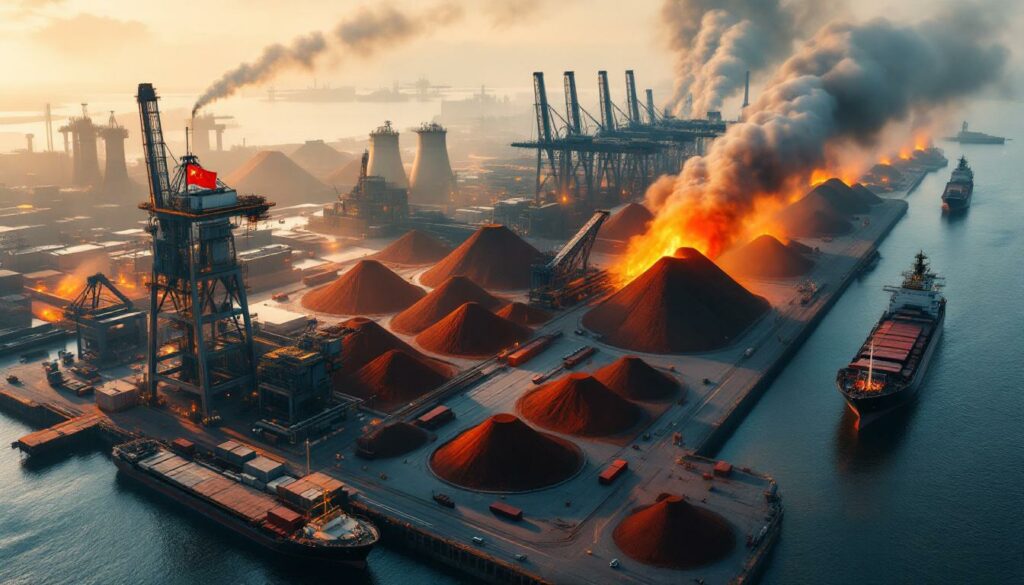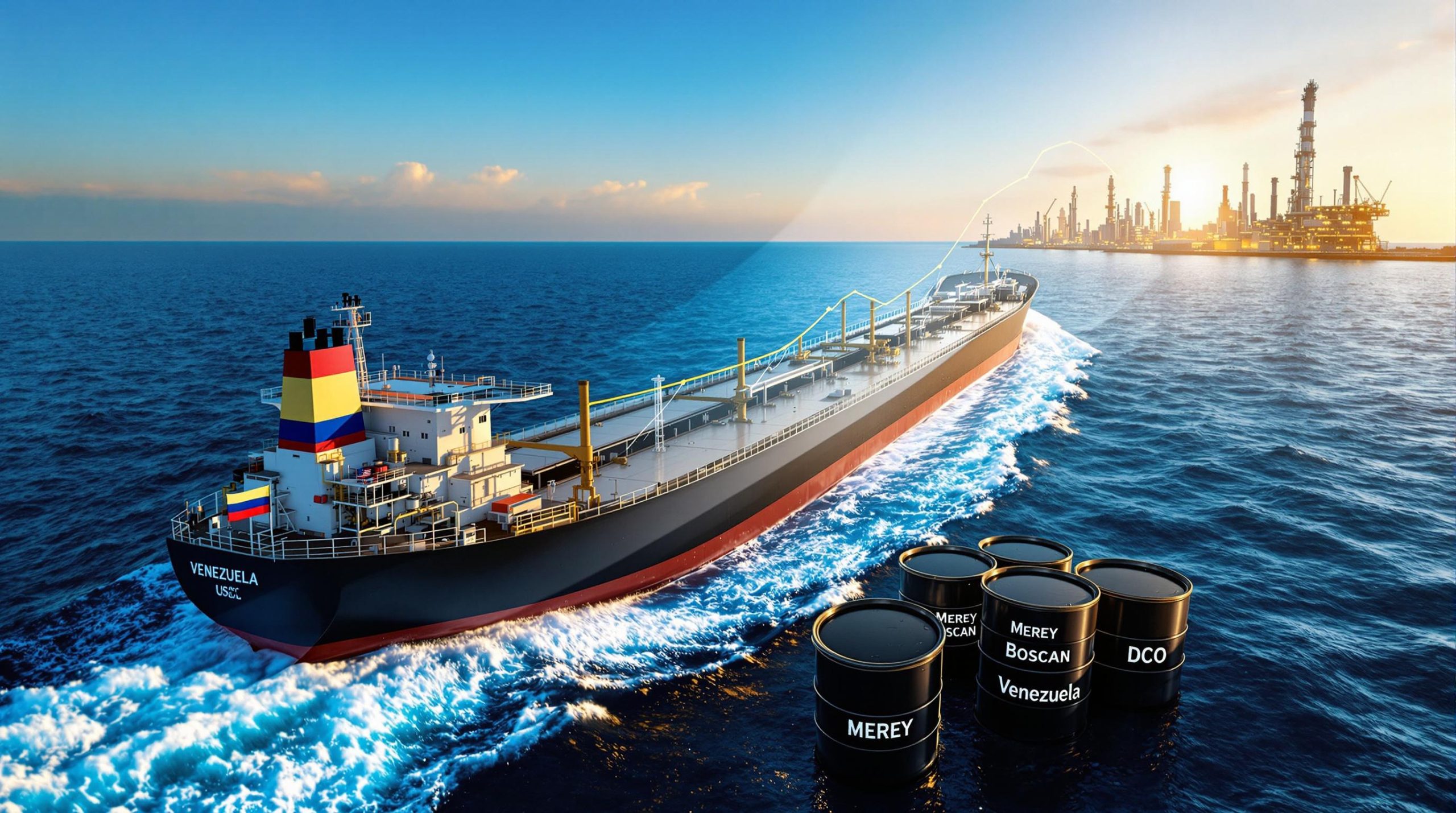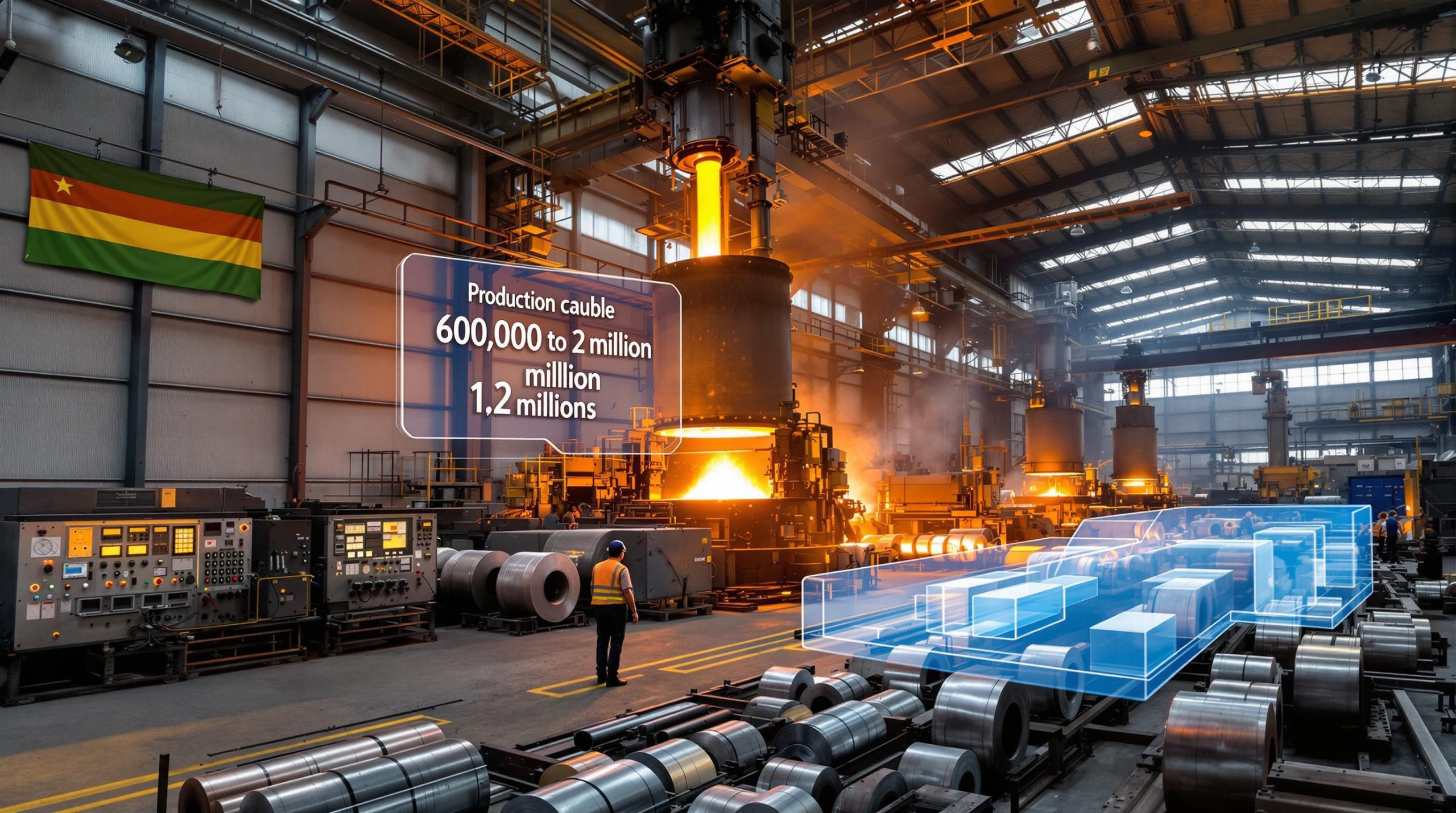China's Iron-Ore Imports Decline in May Amid Seasonal Demand Expectations
China's iron-ore imports decreased by 4.9% in May 2025 compared to April, with the world's largest iron-ore consumer bringing in 98.13 million metric tons. This decline reflects cautious procurement strategies by Chinese steel mills anticipating seasonally slower steel consumption periods during the summer months.
The May import volume fell short of analysts' expectations, which had projected figures exceeding 100 million tons. Compared to the previous month's 103.14 million tons and the 102.03 million tons imported in May 2024, this represents a significant reduction in import activity and continues a broader trend of moderated demand.
"The decline reflects a strategic shift in procurement patterns rather than a fundamental weakening of China's steel sector," notes Steven Yu, senior analyst at consultancy Mysteel. "Mills are demonstrating greater sophistication in inventory management based on seasonal demand forecasts."
Key Factors Behind the Import Decline
Domestic Procurement Preferences
Several factors contributed to the decreased import volume in May 2025, with pricing differentials playing a particularly significant role:
- Steel manufacturers opted to source materials from domestic ports rather than international markets
- Portside inventory offered more competitive pricing compared to seaborne cargoes, with price spreads reaching up to $5-7 per ton
- Abundant domestic supply made local procurement more attractive, with many mills reporting sufficient stocks for near-term production needs
- Steel producers exercised strategic caution in anticipation of seasonal demand fluctuations
The price-sensitive nature of procurement decisions has become increasingly evident as Chinese mills work to optimize costs in a challenging margin environment. With domestic port prices undercutting seaborne rates, the economic incentive to favor local sourcing was particularly strong in May.
Inventory and Customs Timing Effects
The import decline had measurable effects on China's iron-ore stockpiles and was partially influenced by customs clearance timing:
- Portside inventory dropped 2.8% month-on-month to 133 million tons by May 30
- This represents the lowest inventory level since February 2024
- Some vessels cleared customs in advance of the May Day holiday break (May 1-5)
- This timing anomaly contributed to lower-than-expected May imports and higher-than-expected April figures
"Some vessels cleared customs in advance due to the May Day holiday break," explains Steven Yu from Mysteel. "This contributed to lower-than-expected imports in May and higher-than-expected imports in April."
The inventory drawdown indicates mills were comfortable reducing stock levels ahead of the traditional summer slowdown in construction activity, which typically begins in late June and extends through August in many regions of China.
Long-Term Import Trends
The May decrease is part of a broader pattern in China's iron-ore import activity that reveals evolving procurement strategies:
- For the first five months of 2025, imports declined 5.2% year-on-year
- Total imports for January through May reached 486.41 million tons
- This continues a pattern of moderated demand compared to previous years
- Industry analysts attribute this to China's evolving steel production strategies
The multi-year trend shows a gradual shift in China's approach to raw material sourcing, with greater emphasis on:
- Increased domestic iron ore utilization where grade quality permits
- Growing use of electric arc furnaces and scrap steel (reducing primary iron ore demand)
- More sophisticated inventory management to minimize carrying costs
- Strategic timing of purchases to leverage price fluctuations
These structural changes suggest that even as China maintains its position as the world's dominant iron ore importer, the nature and pattern of its import activity is evolving in response to domestic industrial policies and economic priorities.
What This Means for Global Iron-Ore Markets
Supply-Demand Dynamics
The reduction in Chinese imports has several implications for global iron ore market analysis and major suppliers:
- Potential pressure on seaborne iron-ore prices if the trend continues into summer months
- Increased competition among major suppliers (Australia, Brazil, South Africa) to secure Chinese contracts
- Possible inventory adjustments by major mining companies to prevent oversupply
- Shifting trade patterns as Chinese buyers leverage domestic versus international sources
The impact on global pricing benchmarks has been notable, with the Platts IODEX 62% Fe CFR North China index showing increased volatility throughout May. This reflects market uncertainty about the sustainability of Chinese iron ore demand insights through the traditionally slower summer construction period.
Market Insight: While Chinese import volumes have declined, high-grade ore (65% Fe and above) has maintained stronger relative demand compared to medium and lower grades, indicating mills' preference for efficiency in a margin-constrained environment.
Strategic Considerations for Steel Producers
Chinese steel mills are demonstrating strategic flexibility in their procurement approaches that reflects greater market sophistication:
- Balancing between port-sourced and seaborne cargoes based on price differentials that can exceed $5-7 per ton
- Adjusting inventory levels in anticipation of seasonal demand patterns, with most mills targeting 3-4 weeks of supply
- Optimizing logistics to account for holiday periods and customs clearance timing
- Responding to domestic steel consumption forecasts with calibrated purchasing
This procurement flexibility has become increasingly important as mills face margin pressures from rising energy costs and environmental compliance requirements. By optimizing raw material costs through strategic timing and source selection, producers can partially offset these pressures.
Future Outlook for Iron-Ore Imports
Seasonal Factors
Several seasonal factors will influence upcoming import volumes through the remainder of 2025:
- Traditional summer construction slowdown in China (June-August) due to high temperatures and rainfall
- Potential weather-related disruptions to shipping and port operations, particularly during the typhoon season
- Scheduled maintenance periods at steel mills affecting demand, with many facilities planning 1-2 week outages
- Inventory management strategies ahead of autumn demand recovery typically beginning in September
Historical patterns suggest that import volumes often decline by 5-8% during the summer months before recovering in September as construction activity resumes. Weather-related shipping disruptions can further compound this seasonal effect, with the South China Sea typhoon season creating periodic delays at major ports.
Economic Indicators
Broader economic factors that may impact future iron ore price trends include:
- China's infrastructure development pace, with provincial spending in Q2 2025 up 3.2% year-on-year
- Real estate sector performance, which remains under pressure with new construction starts down 2.8% YoY
- Manufacturing activity levels, with the PMI hovering around 49.8 in May (below the expansion threshold)
- Government policies affecting steel production and consumption, including environmental restrictions in key industrial provinces
These indicators suggest a cautious outlook for iron-ore demand through the remainder of 2025, with the potential for modest recovery in Q4 if construction activity accelerates as anticipated following the summer slowdown.
Expert Analysis: "We're seeing a more sophisticated approach to iron ore procurement from Chinese mills," explains industry analyst Steven Yu. "Rather than maintaining consistently high import levels throughout the year, they're increasingly aligning purchases with seasonal demand patterns and price opportunities."
FAQ: China's Iron-Ore Import Trends
How much did China's iron-ore imports decrease in May 2025?
China's iron-ore imports dropped 4.9% in May compared to April 2025, totaling 98.13 million metric tons.
What was the year-on-year change in China's iron-ore imports for the first five months of 2025?
For January through May 2025, China's iron-ore imports declined 5.2% compared to the same period in 2024, totaling 486.41 million tons.
Why did Chinese steel mills reduce their seaborne iron-ore purchases?
Steel mills preferred to procure iron-ore from domestic ports where supply was abundant and prices were more competitive than seaborne cargoes, especially in anticipation of seasonally slower steel consumption.
What happened to portside iron-ore inventory levels in May?
Portside inventory dropped 2.8% month-on-month to 133 million tons by May 30, reaching the lowest level since February 2024.
How did the May Day holiday affect import statistics?
Some vessels cleared customs in advance due to the May Day holiday break, which contributed to lower-than-expected imports in May and higher-than-expected imports in April.
Is China's reduced iron-ore importing a temporary or long-term trend?
The reduced imports reflect both seasonal patterns and longer-term structural changes in China's steel industry, including increased scrap utilization and more sophisticated inventory management strategies.
China's Strategic Iron Ore Position
The fluctuations in China's iron-ore imports reflect more than just seasonal variations—they demonstrate the country's evolving approach to resource security and industrial policy:
- Diversification efforts: China has been actively developing alternative supply sources in Africa and investing in mines globally
- Domestic production enhancement: Despite lower grades, Chinese domestic iron ore production reached 268 million tons in 2024
- Scrap steel utilization: Electric arc furnace capacity has increased by 22% since 2020, reducing reliance on primary iron ore
- Strategic reserves: China maintains undisclosed strategic iron ore reserves estimated at 90-120 million tons
These strategic initiatives allow China greater flexibility in import timing and volume, enabling buyers to leverage market conditions more effectively while reducing vulnerability to supply disruptions or price volatility.
Disclaimer: This analysis reflects current market conditions and is based on available data. Future iron ore price forecast may vary based on policy changes, economic developments, or unforeseen market disruptions. Readers should consult professional financial advisors before making investment decisions based on these trends.
As global iron ore markets adjust to China's more measured approach to imports, suppliers and investors alike must recalibrate expectations. Furthermore, the era of consistently rising Chinese iron ore imports may be giving way to a more nuanced pattern characterized by strategic procurement, seasonal adjustments, and growing domestic alternatives. Australian iron ore leadership will likely continue to play a crucial role in the evolving market landscape, despite these changing dynamics.
Ready to Spot the Next Major Mineral Discovery?
Stay ahead of the market with Discovery Alert's proprietary Discovery IQ model, which provides instant notifications on significant ASX mineral discoveries, turning complex data into actionable investment insights. Explore why historic discoveries can generate substantial returns by visiting Discovery Alert's dedicated discoveries page and begin your 30-day free trial today.




